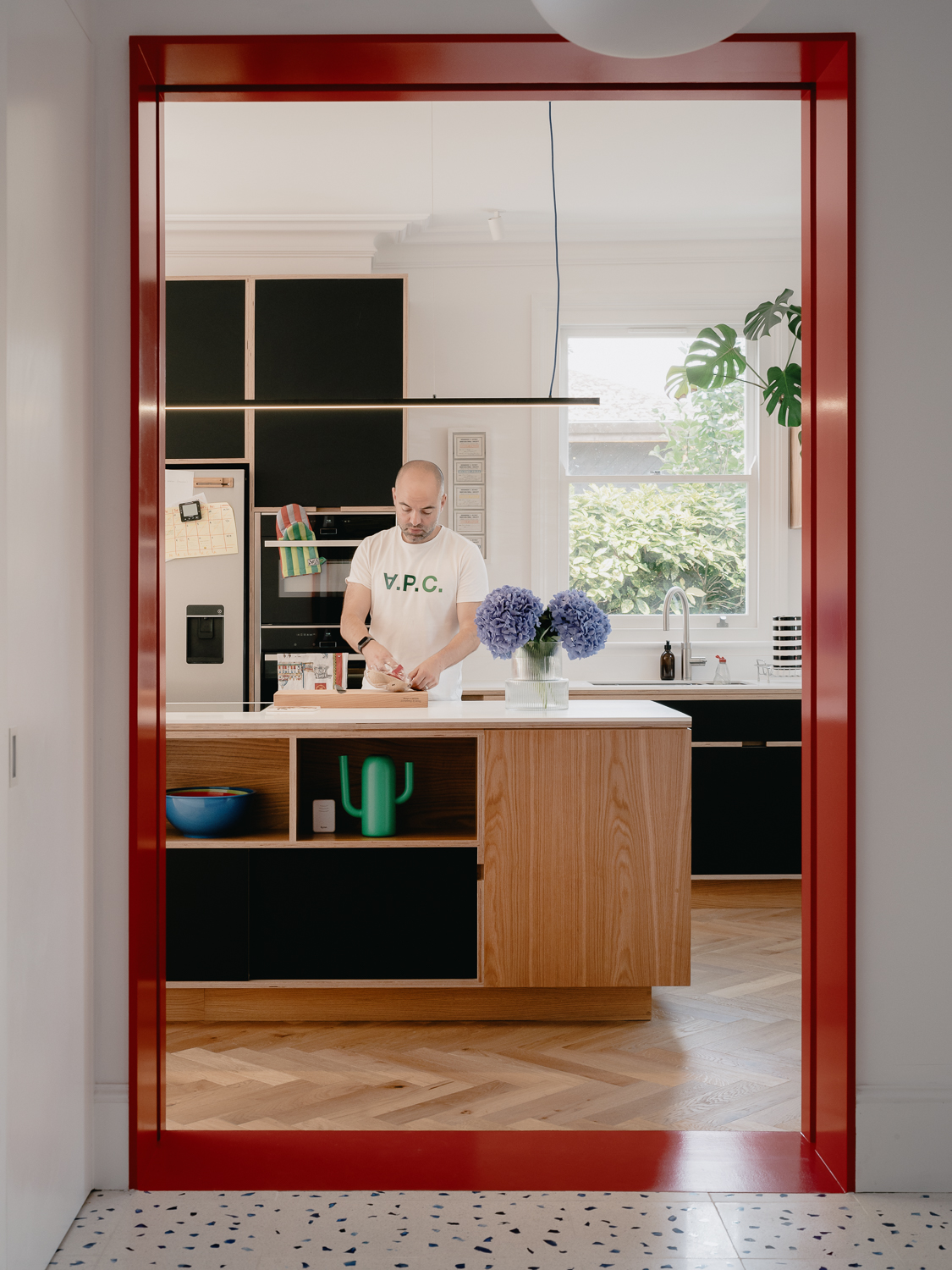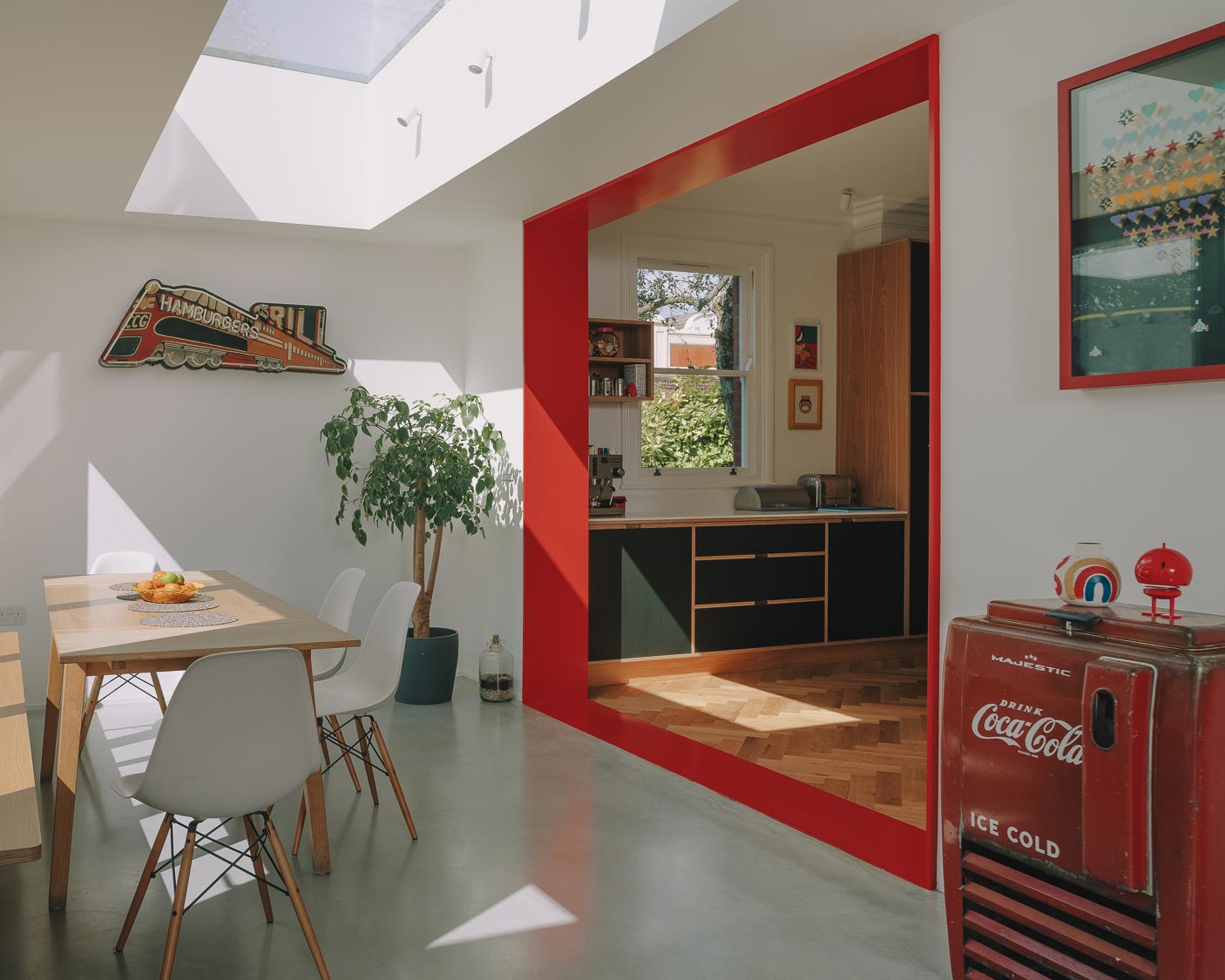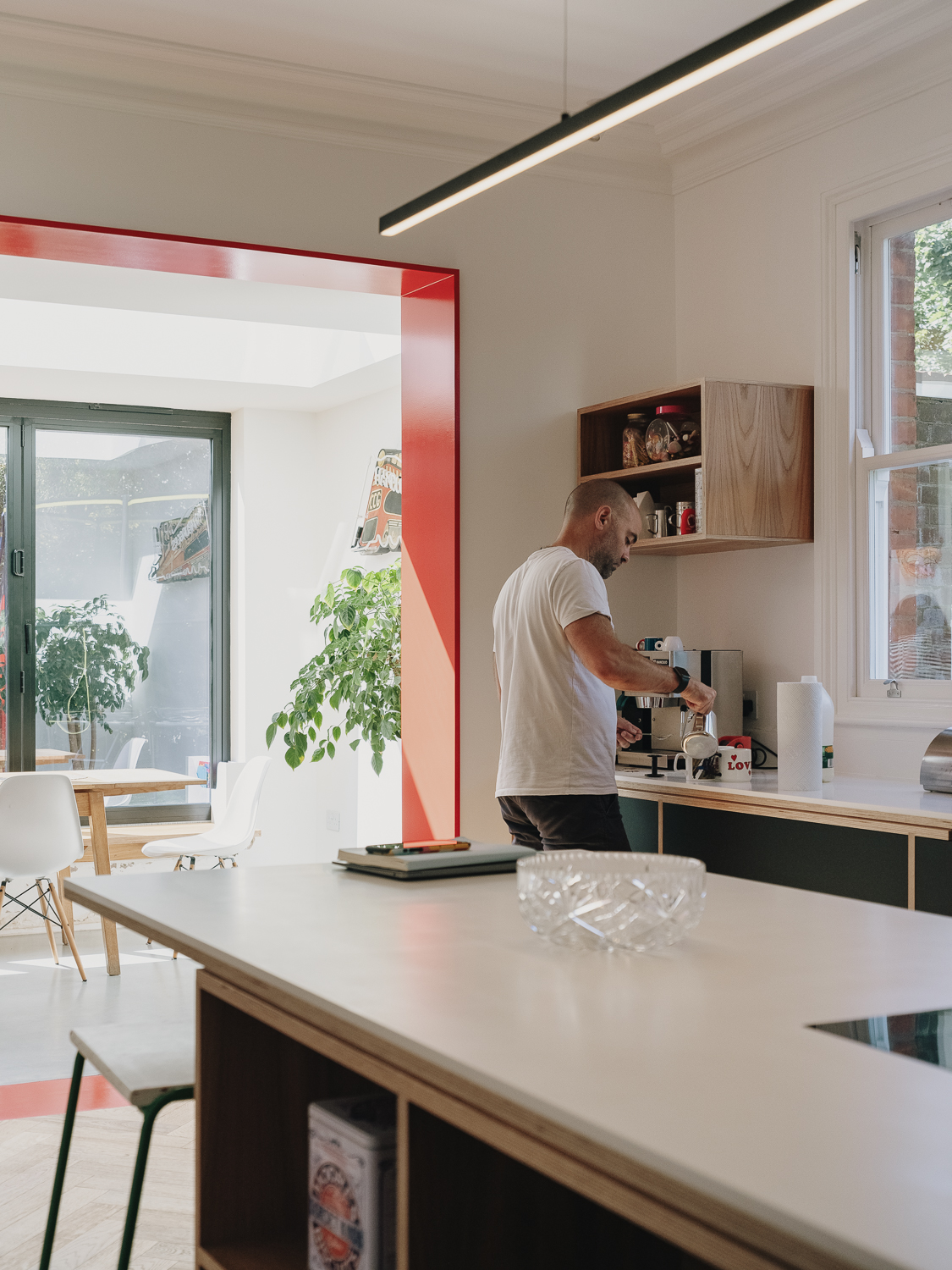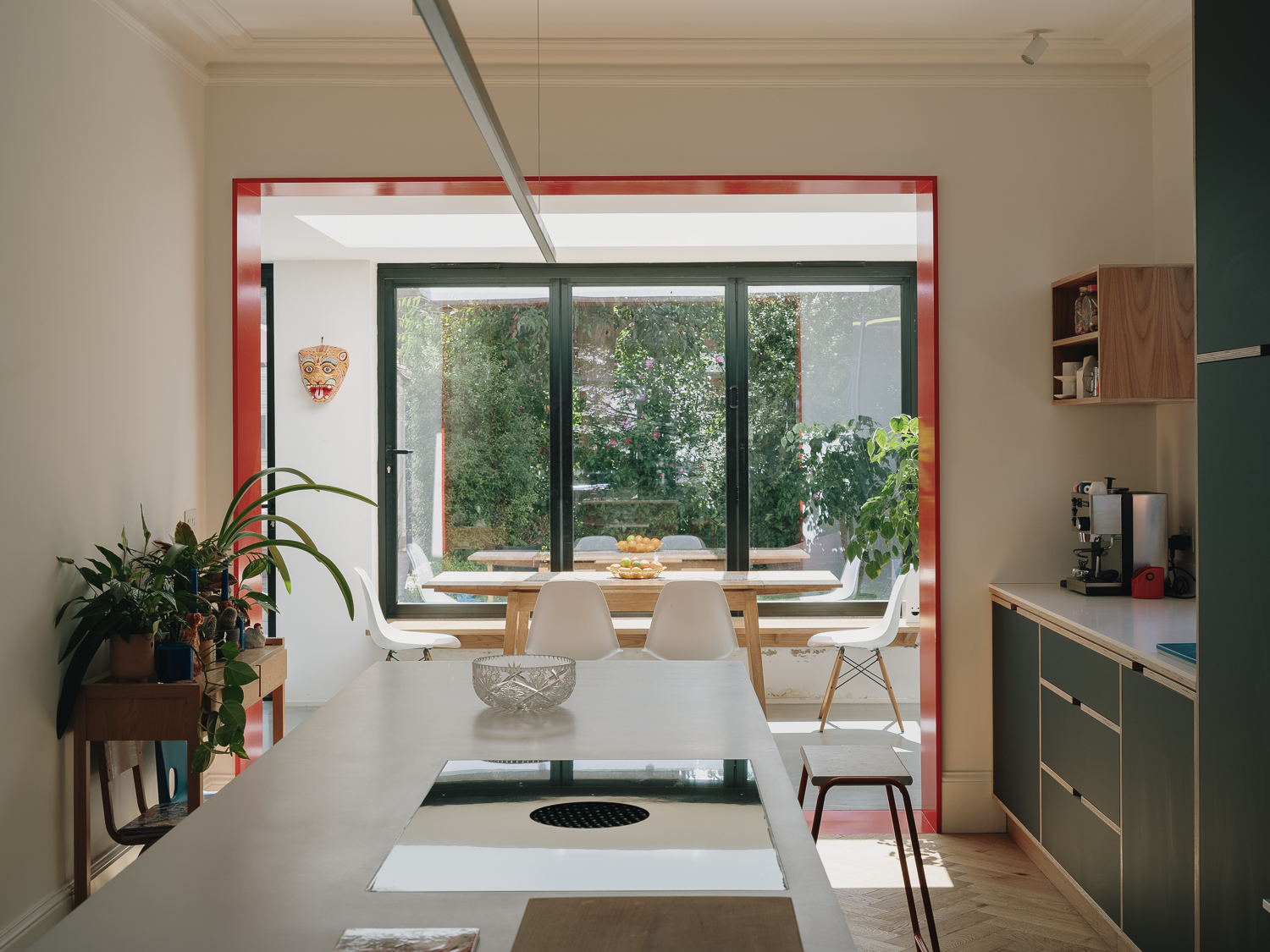Uncommon view
The client came to us with a clear and considered brief. Having already reworked the ground floor with their architect, they chose to position the kitchen in the front reception room—an unconventional but inspired decision that made the most of the home’s proportions, natural light and architectural features.
The design challenge lay in balancing function with sensitivity to the space. Four large windows and an angled chimney breast limited opportunities for tall cabinetry, so we focused all tall storage between two windows on the long internal wall. This placement also allowed us to conceal the ceiling-level remnant of the chimney breast, using tall cabinets at 2.5m height to create a clean line across the room.
Below, the base cabinetry was split into two functional zones: one side for washing, bins and dishwasher; the other a dedicated breakfast and coffee station. By resisting the urge to place cabinets in front of the front-facing windows, we preserved the room’s openness and created a more efficient galley-style layout. In the adjacent dining area, we installed a cantilevered plywood window seat, which helps connect the two spaces.
The island, at 90cm wide, includes an integrated Bora hob, generous prep space and a breakfast bar—serving as the heart of the kitchen. Its open shelf returns offer easy access to daily items, softening the formality of the space and encouraging family use.
A restrained palette of ultra-matt black laminate and oak-veneered birch plywood ties the cabinetry to the architecture, complementing the red structural portals while offering contrast and warmth. White Corian worktops keep the space bright and practical.
This project reflects our core philosophy: thoughtful zoning, careful proportion, and material integrity—resulting in a kitchen that is both highly usable and deeply connected to its setting.
Alan Drumm, design director, Uncommon Projects














